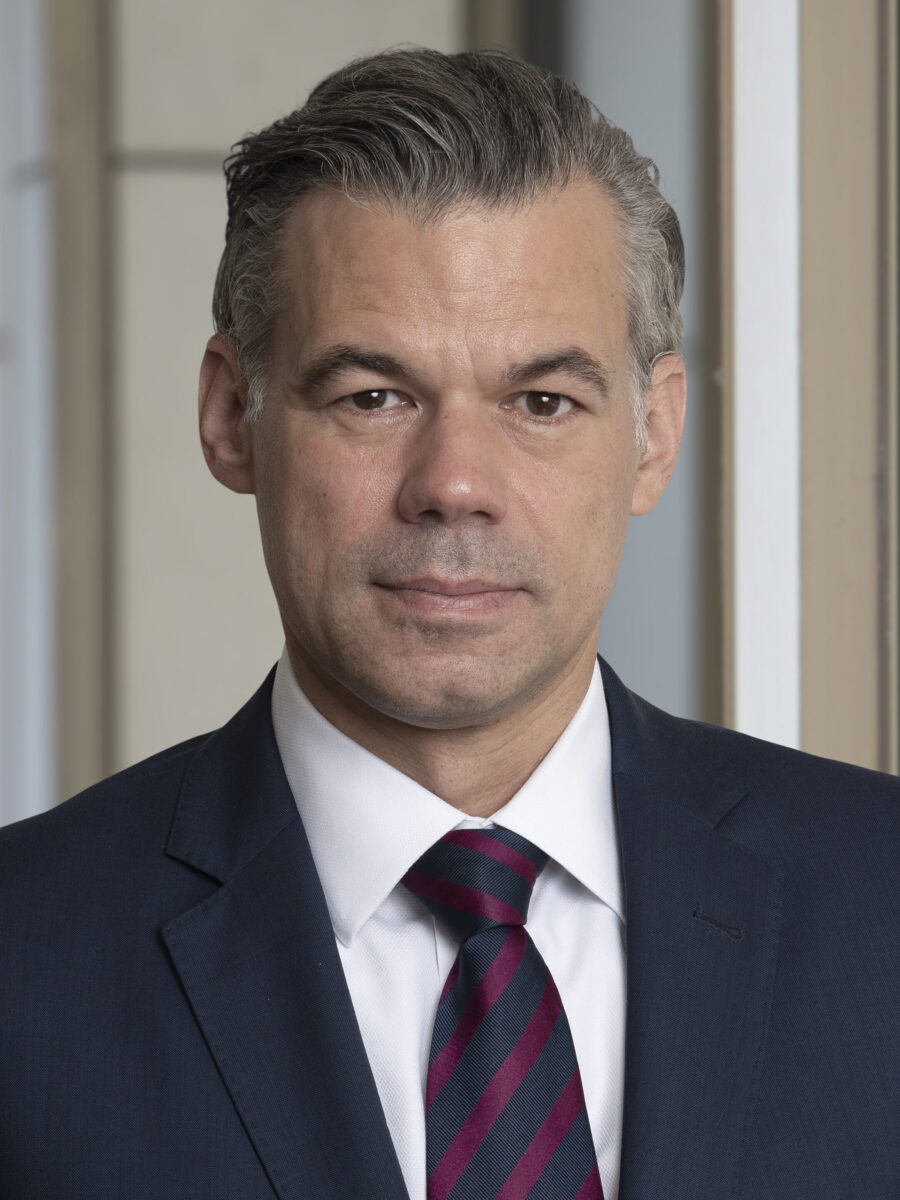Investment Strategy
The Berenberg Sustainable Stiftung fund is a sustainable and distribution-orientated multi-asset fund that takes foundation-specific aspects into account at limited risk. The objective of the defensively oriented portfolio is to exploit opportunities and generate earnings potential in order to ensure long-term real capital preservation and the generation of steady returns. This especially includes the active management of investment ratios, the capital commitment period as well as regional and sectoral allocation. Due to the focus on the inclusion of Berenberg’s sustainability criteria in the selection process, the strategy is especially suitable for investors with social commitments or high moral and ethical standards.
- Sustainable multi-asset solution with distribution focus
- Active management within fixed ranges per asset class
- Active positioning against a mixed market benchmark
- Maximum equity allocation of 35%
- The investment universe comprises mainly single securities
Learn more about our Berenberg Multi Asset investment philosophy
Fund data
| ISIN | DE000A0RE972 |
|---|---|
| WKN | A0RE97 |
| Inception date | 04.05.2009 |
| Issue price (27.03.2025) | 50.30 EUR |
| Redemption price (27.03.2025) | 47.68 EUR |
| Fund volume | 143.25 Mio. EUR |
| Share class volume | 108.24 Mio. EUR |
| Currency Fund / Share Class | EUR / EUR |
| Minimum investment | - |
| Asset Manager | Joh. Berenberg, Gossler & Co. KG |
| Management company | Universal-Investment-Gesellschaft mbH |
| Custodian | BNP Paribas S.A. Niederlassung Deutschland |
| Use of income | Distributing |
| End of financial year | 31.12. |
| Registration and Distribution | DE, AT |
| SFDR Classification (Sustainable Finance Disclosure Regulation) | Article 8 |
Costs
| Issue surcharge | Up to 5.50% |
|---|---|
| Flat-rate fee p.a. | 1.16% |
| Total Expense Ratio (TER) p.a. | 1.19% |
| Performance fee | none |
Chances and risks
| Chances | Risks |
|---|---|
| Asset preservation, primarily achieved through interest income, but also through dividends and price gains | Moderate fluctuations in value due to interest rate risks and a low equity component |
| Stabilization of assets in negative capital market phases through professional risk management and intelligent diversification | Price losses possible in individual stock market years |
| Improvement of the risk/return profile through active management across all asset classes | Currency losses due to exchange rate fluctuations |
| Promotion of sustainable management by taking sustainability criteria into account | Limited participation in positive performance of individual asset classes due to broad diversification and negative selection effects in the selection of individual securities and funds |
Further details on the opportunities and risks of this fund can be found in the sales prospectus.
Indexed performance
Performance in 12-month periods
Monthly performance
| Year | Jan | Feb | Mar | Apr | May | Jun | Jul | Aug | Sep | Oct | Nov | Dec | YTD |
|---|---|---|---|---|---|---|---|---|---|---|---|---|---|
| 2015 | 1.92 | 0.94 | 0.36 | -0.50 | 0.14 | -1.70 | 0.82 | -1.87 | -1.19 | 2.12 | 0.68 | -1.59 | 0.03 |
| 2016 | -1.49 | -0.44 | 0.73 | 0.09 | 1.00 | -0.30 | 1.10 | 0.14 | -0.15 | -0.74 | -0.70 | 1.24 | 0.46 |
| 2017 | -0.25 | 1.53 | 0.44 | 0.61 | 0.71 | -1.15 | 0.21 | 0.15 | 0.36 | 0.96 | -0.37 | -0.02 | 3.17 |
| 2018 | 0.27 | -0.76 | -0.65 | 0.89 | 0.29 | -0.54 | 0.82 | 0.23 | -0.38 | -1.79 | -0.47 | -1.81 | -3.87 |
| 2019 | 2.15 | 1.31 | 1.26 | 1.49 | -0.91 | 1.55 | 1.09 | 0.55 | 0.12 | 0.12 | 0.69 | 0.61 | 10.47 |
| 2020 | 0.94 | -1.79 | -6.96 | 3.43 | 1.51 | 1.80 | 1.15 | 1.14 | -0.26 | -0.63 | 2.15 | 0.84 | 2.97 |
| 2021 | -0.04 | -0.38 | 1.58 | 1.04 | 0.49 | 1.24 | 1.28 | 0.94 | -1.59 | 1.46 | -0.12 | 0.85 | 6.90 |
| 2022 | -3.85 | -2.32 | 0.06 | -1.85 | -2.15 | -3.23 | 3.82 | -3.01 | -3.70 | 0.14 | 2.75 | -2.17 | -14.74 |
| 2023 | 2.74 | -0.75 | 0.59 | -0.02 | 0.27 | -0.07 | 1.05 | -0.32 | -1.26 | -0.50 | 2.75 | 2.19 | 6.77 |
| 2024 | 0.76 | 0.07 | 1.75 | -0.64 | 0.69 | 0.79 | 1.30 | 0.77 | 0.80 | -0.61 | 1.31 | -0.52 | 6.63 |
| 2025 | 1.99 | 0.62 | - | - | - | - | - | - | - | - | - | - | 0.99 |
Source: Berenberg, Management company
The charts and tables regarding performance shown here are based on own calculations according to the method developed by the German Investment Funds Association (BVI). They illustrate past performance. Future performance can deviate both positively and negatively from these calculations. Gross performance (BVI method) takes into account all charges at fund level (e.g. management fee), net performance plus the issue surcharge. Additional charges can arise for individual investors (e.g. custody account fees, commissions and other fees). Model calculation (net): An investor wants to purchase fund units for EUR 1,000 EUR. Considering a max issue surcharge of 5.50% he has to payEUR 55.00 for the purchase. Also, fees may be charged for the administration of the safe custody account, which will lower the performance. Past performance is not a reliable indicator of future performance.
Performance after issue surcharge
| 1 year | 5.07% |
|---|---|
| 3 years | 4.61% |
| 5 years | 17.44% |
| since inception | 28.81% |
| Max. Drawdown 5 years | -16.98% |
Source: Berenberg, Management company | State: 27 Mar 2025
Risk figures
| Volatility - 1 year | 3.62% |
|---|---|
| Volatility - 3 years | 4.33% |
| Sharpe Ratio - 3 years | -0.23 |
| Maximum Drawdown - since inception | -16.98% |
Currencies
Asset classes
Top Holdings
Equities - Sectors
Equities - Countries
Bonds - Sectors
Bonds - Countries
Monthly market comment
February continued to be dominated by the new political leadership in the US, with the announcement and implementation of new tariffs and the "DOGE" savings measures. US economic and consumer confidence deteriorated, while scepticism towards AI stocks continued to weigh on markets. The S&P 500 closed the month down 1.30%, while the Nasdaq fell 3.91%. In contrast, European equity markets continued to outperform their US counterparts. The Stoxx Europe 50 rose by 3.57%, boosted by growing optimism about a possible peace settlement in Ukraine and the positive impact of the German general elections. The yield on 10-year US Treasuries fell by more than 33 basis points (bp) over the month, while 10-year German government bonds fell by only around 5 bp. At the same time, risk premiums on European investment grade bonds widened by around 2 bp. The continued decline in US yields led to a further depreciation of the US dollar against the G10 currencies. Gold prices continued to rise in February, ending the month with a gain of around 2%.
Portfolio Management

Oliver Brunner
Oliver Brunner, CIIA, heads the portfolio management department (core strategies) at Berenberg. He has been working in private asset management since 2007. In addition to overall responsibility for the core strategies and 1590 fund family, the graduate industrial engineer manages large special mandates for foundations, church institutions and private clients with special requirements. He completed his studies at the end of the 1990s at the Technical University of Karlsruhe; in 2006 he passed the part-time examination to become a Certified International Investment Analyst (CIIA). From 2000 to 2007, he was portfolio manager and equity analyst at Baden-Württembergische Bank AG in Stuttgart.

Christian Saalfrank
Christian Saalfrank has been with Berenberg since May 2023. As co-fund manager of the Berenberg Sustainable Foundation mutual fund, he is responsible for sustainable and high-dividend strategies in the Multi Asset Income & ESG division in Frankfurt. He has many years of experience and particular expertise in the management of large special funds for savings banks, companies and municipalities. After completing a banking apprenticeship at Stadtsparkasse Nürnberg, he studied business administration at the University of Erlangen-Nuremberg in the mid-1990s. After graduating, he began his career as a junior fund manager at SEB Invest. In 2001, he passed the part-time Certified European Investment Analyst (CEFA) exam. From 2001 to 2021, he worked as a Senior Fund Manager Multi Asset/Equities for institutional clients at Helaba Invest. Most recently, he worked as Head of Equities at LeanVal Asset Management AG.
Consideration of ESG Elements
Identifying companies and business models that will be successful in the long term is the basis for good investment decisions. Environmental, Social and Governance (ESG) factors are key factors in decision making and are therefore integral
components of the investment process.
CO₂-Intensity
The fund does not actively manage its carbon footprint, however, emissions data such as CO2 intensity are relevant parameters which can be used to assess the efficient management of a company and the extent of transition risks.
ESG Score
The data provider MSCI ESG uses an ESG score of 0 to 10 to assess the management of material ESG risks of portfolio holdings compared to competitors.
ESG Controversies Screen
Investments in the fund are monitored for ESG controversies and, with the help of MSCI ESG data, flagged according their severity. Thereby, potential ESG risks of investments are identified. In the case of an orange flag (severe controversy), we enter into an active exchange with the company. In the case of a red flag (very severe controversy), the company is excluded.


